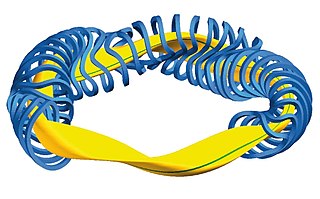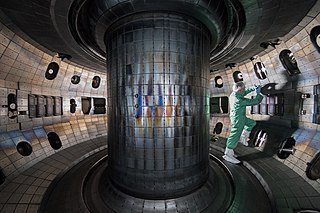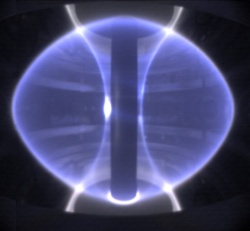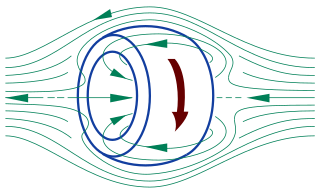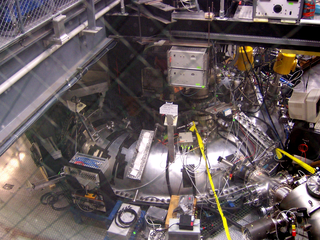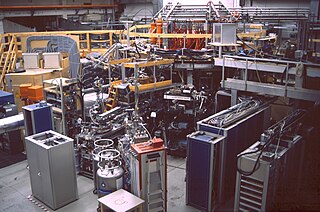PLH (H-Mode Power Threshold)
PLH
PLH (H-mode power threshold) is an essential parameter in nuclear fusion. It represents the minimum power input required to trigger the transition from a low-confinement mode (L-Mode) to a high-confinement mode (H-Mode) in plasma confinement devices, such as tokamaks or stellarators. [2] The PLH signifies the point at which the plasma attains the conditions necessary for enhanced energy confinement, reduced turbulence, and improved stability characteristic of H-Mode. [1] [4] Controlled nuclear fusion requires understanding and precise control of the PLH in order to facilitate the continuous generation of energy from the fusion process. [5]
Factors Influencing PLH
Plasma Density and Magnetic Field Strength
H-Mode Power Threshold (PLH) in experimental nuclear-controlled fusion is highly dependent on both plasma confinement and magnetic field intensity. [1] [2] Higher plasma densities and stronger magnetic fields correlate positively with the elevated PLH. [1] [2] [4]
- τ is the confinement time
- n is plasma density
- V is the volume of the plasma
- B is the magnetic field strength
Higher plasma densities result in increased particle collisions, enhancing the confinement of energy and increasing the plasma's stability. [1] [4] The greater the density, the higher the threshold of power (PLH) required to transition from L-Mode to H-Mode. [1] The increased particle density allows for improved plasma confinement, which is vital for sustaining fusion reactions efficiently. [1] [4]
Similarly, stronger magnetic fields serve to contain and shape the plasma, mitigating its loss and preventing contact with the reactor's walls, which would ultimately lead to the reaction's failure. [2] [4] This magnetic confinement is essential for preventing energy losses and ensuring that the plasma reaches the conditions necessary for the L-Mode to H-Mode transition. [2]
Heating Method
The heating methods used in fusion devices significantly impact the PLH. Various techniques, such as neutral beam injection (introduction high energy neutral particles to increase plasma temperature), radio frequency heating (uses radiofrequency waves to increase kinetic energy of particles), and magnetic confinement(uses magnetic fields to control extremely hot plasma), are employed to heat the plasma to the required temperatures for H-Mode. [1] [5] The choice of heating method and the effectiveness of energy transfer to the plasma are key factors in determining the PLH.
Plasma Fueling
Plasma fueling, which involves introducing additional fuel into the plasma, is another factor influencing the PLH. [1] [5] By injecting fuel, researchers can alter the plasma's density and temperature. [1] [5] An efficient and well-calibrated fueling system can elevate the plasma density, increasing the number of particles within the plasma, which is essential for enhancing confinement and stability. [1] [5] Additionally, effective fueling contributes to the rise in plasma temperature, a vital factor in achieving the conditions required for the L-Mode to H-Mode transition. [1] [5]
Edge Plasma Control
Edge plasma control is an important aspect of achieving and maintaining H-Mode in fusion devices. [1] The edge plasma region, located at the outer boundary of the plasma confinement area, is susceptible to instabilities and turbulence. [1] [4]
The edge plasma is sensitive to disturbances because it's close to the magnetic confinement boundaries, where the plasma interacts with the walls of the containment vessel. [1] These disturbances can lead to issues like uneven heat and particle movement or localized turbulence, which affect the transition to H-Mode. [1] [4]
To tackle this techniques such as magnetic shaping and advanced tools can control the edge plasma. [1] The aim is to reduce these disturbances and make the edge plasma more stable. [1] By regulating factors such as temperature, density, and impurities in the edge plasma, researchers can influence the PLH (H-Mode Power Threshold). [5] Effective control of these factors ensures that the conditions for transitioning from L-Mode to H-Mode are met and maintained.
Methods for Measuring and Determining PLH
Electron Cyclotron Emissions (ECE)
Electron Cyclotron Emission (ECE) diagnostics, involve observing the radiation emitted by electrons as they undergo cyclotron motion (motion where a particle moves in a spiral path away from the center) in the magnetic field. [1] This technique provides valuable insights into plasma parameters, including electron temperature and density. [4] By analyzing the emitted radiation's spectral characteristics, researchers can precisely measure these properties, aiding in the determination of PLH. [1]
Thomson Scattering
Thomson scattering employs laser beams to scatter off plasma electrons. [1] The scattered light's characteristics show data on the velocity and temperature of these electrons, providing critical information about the plasma's thermal energy. [1]
Magnetic Diagnostics
Magnetic sensors and probes are employed to map the magnetic fields within the plasma confinement device. [2] Knowledge of the magnetic field's strength and configuration is fundamental for determining PLH, as it directly affects plasma stability and confinement. [2]
Langmuir Probes
Langmuir probes are small electrodes inserted into the plasma to measure its properties, including electron temperature, density, and plasma potential. [4] These measurements are critical for evaluating PLH and understanding the behavior of the plasma. [4]

